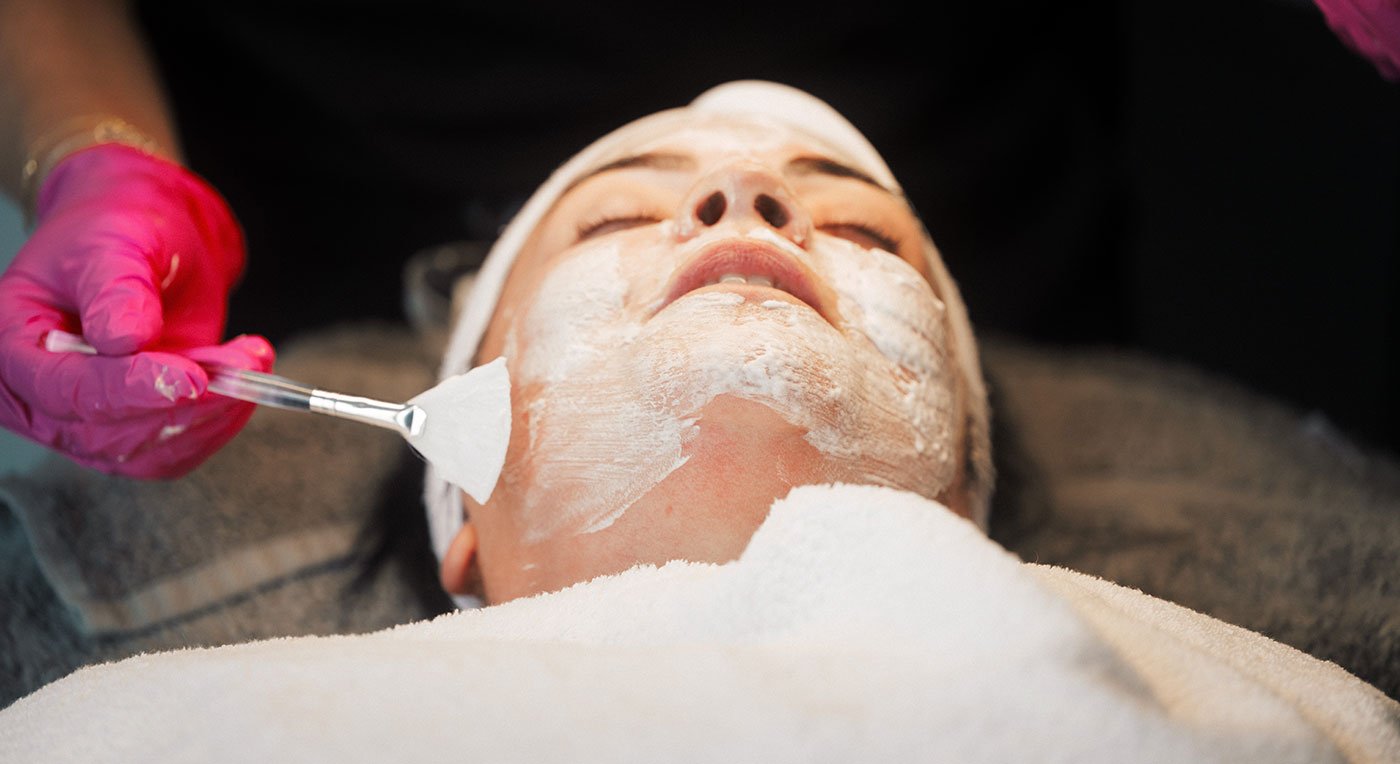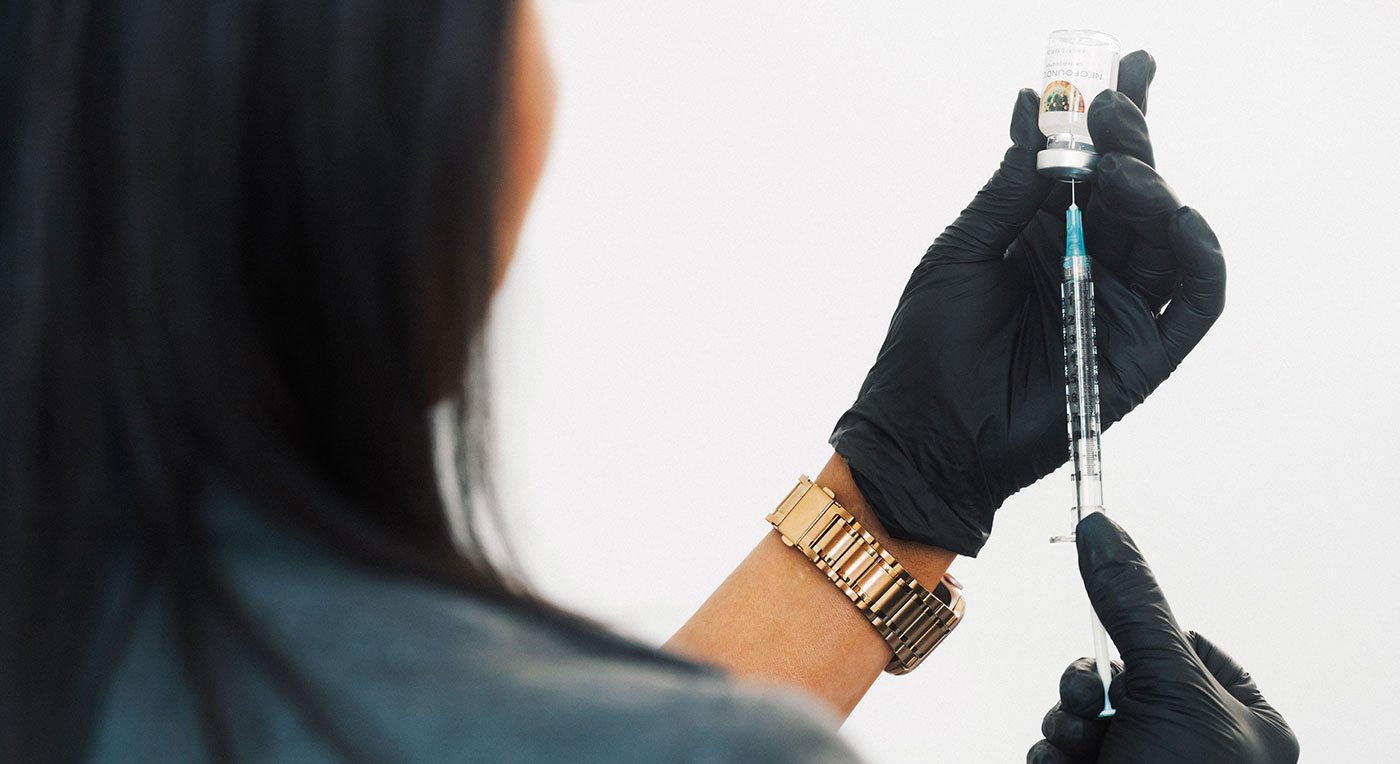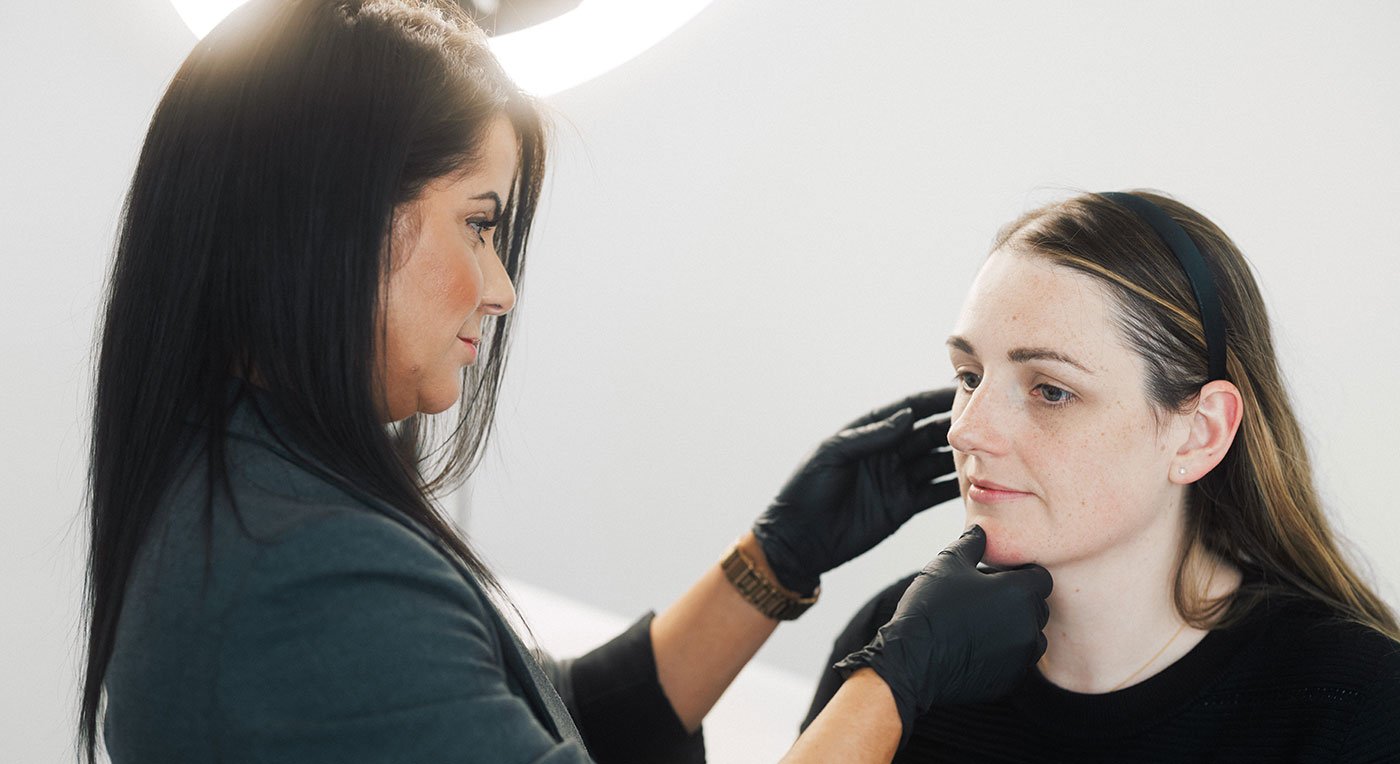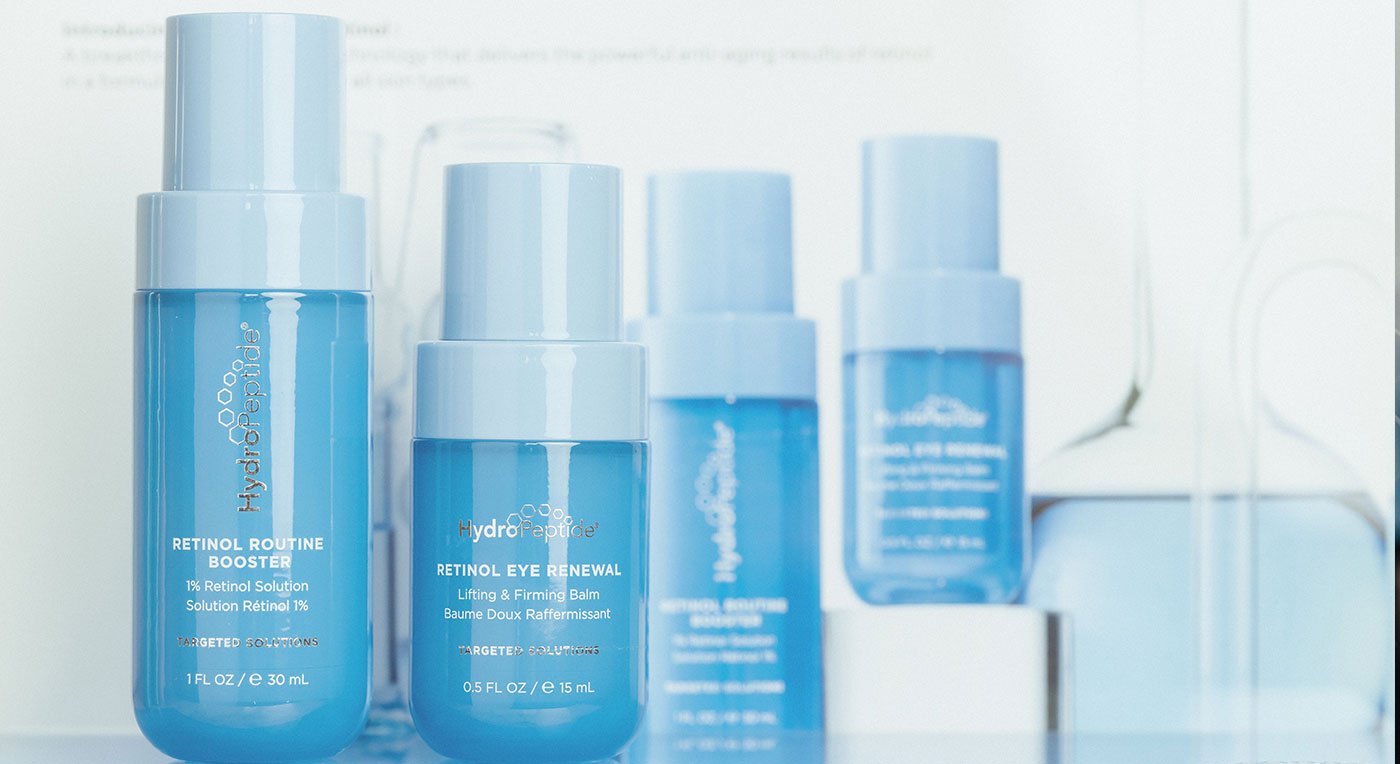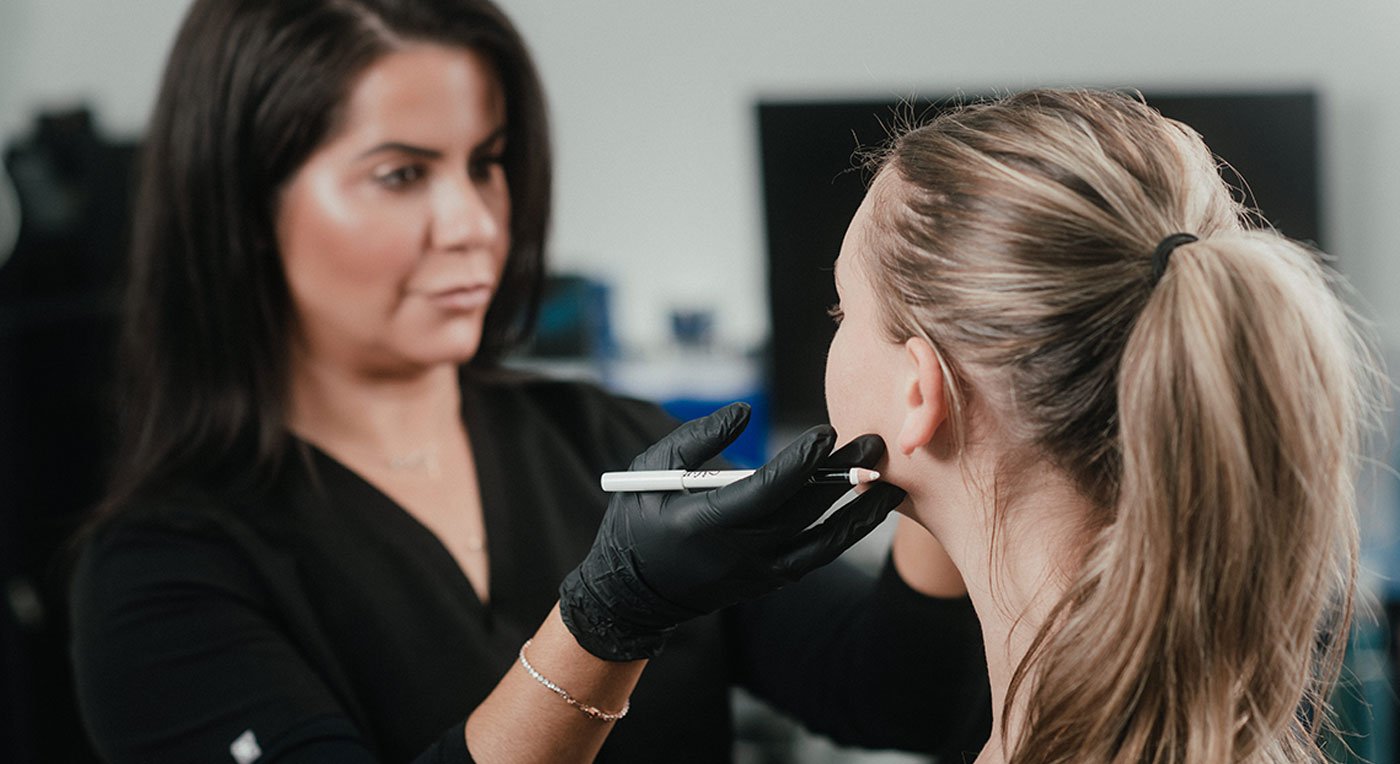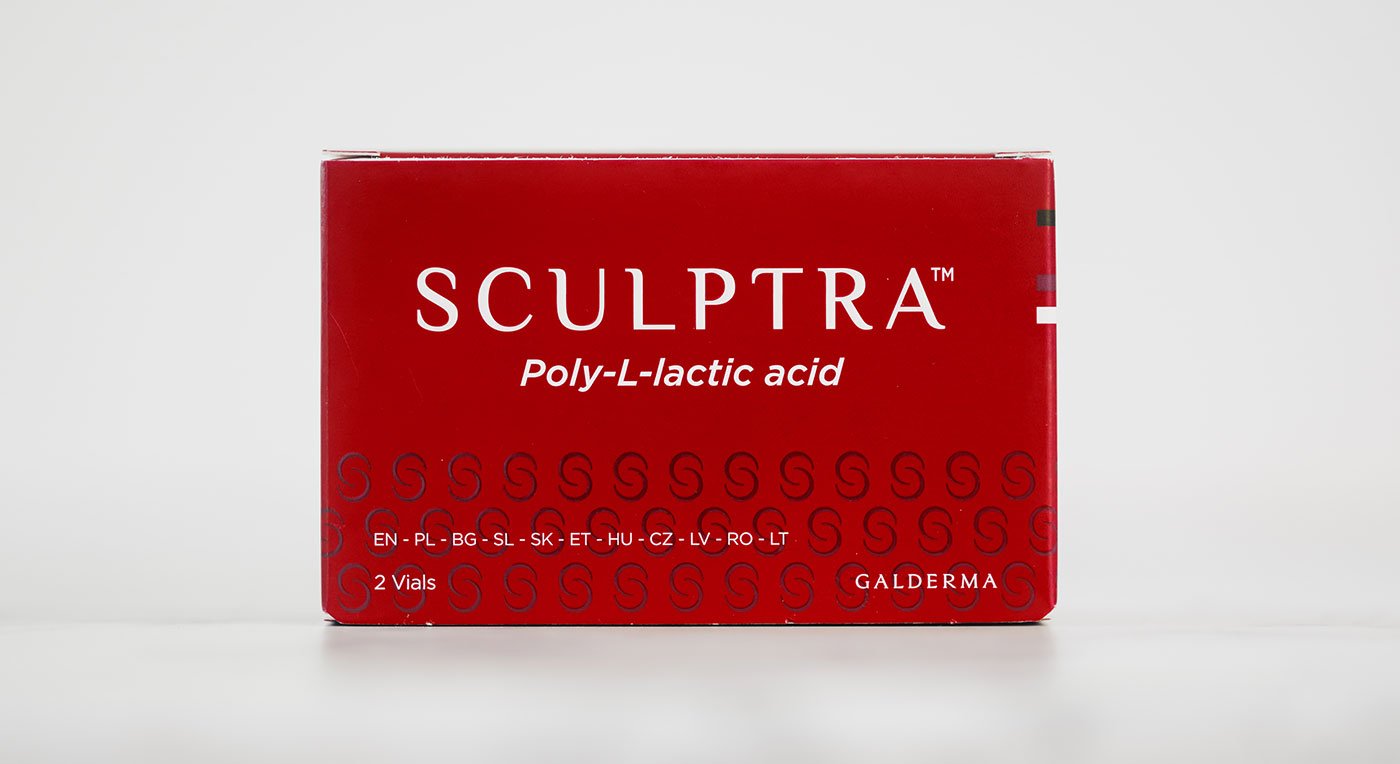Microneedling is one of the most powerful and transformative skincare treatments available, but with that power comes… a whole lot of myths!
Also known as collagen induction therapy, this treatment is great for smoothing wrinkles, fading acne scars, and skin rejuvenation.
But as with any popular treatment, misinformation has started to spread and this has fuelled widespread microneedling myths, keeping many from experiencing its amazing benefits. That’s where we come in!
Consider us your personal myth-busters, here to separate fact from fiction and set the record straight. Let’s clear up the confusion and debunk five common microneedling myths!
Myth 1: Microneedling is Painful
It’s fair to think microneedling might hurt, but it’s not nearly as scary as it sounds. Microneedling creates tiny micro-injuries on the skin that are super minimal, and most people barely feel a thing. This is especially true since numbing cream is used to keep things comfortable [1][5].
According to the British College of Aesthetic Medicine (BCAM) most patients only experience mild discomfort, making it an easy, well-tolerated treatment for skin rejuvenation [5][7].
A big reason this myth exists is that people assume all microneedling treatments feel the same, but that’s not true!
There’s a significant difference between professional microneedling devices and at-home devices. Professional microneedling tools are designed with precision, which allows practitioners to adjust the needle depth to match any skin type and the area being treated. This means better results and less discomfort [6][9].
On the other hand, at-home rollers don’t have that level of control, which can make the experience painful and less effective [6][9]. It is important to seek professional microneedling treatment from qualified medical aesthetic practitioners to ensure safety and effectiveness [4][6].
These myths often make people believe that all forms of the treatment are painful, but with proper technique and care, it’s a comfortable and easily manageable experience.
Myth 2: Microneedling Causes Skin Damage
Quite the opposite!
The tiny micro-injuries created during this treatment stimulate the body’s natural healing process, leading to increased collagen and elastin production without actually harming the skin [2].
Unlike more invasive treatments that strip away layers of skin, collagen induction therapy enhances the skin’s natural processes, making it a much safer option with minimal downtime [8].
That said, getting the treatment done by a qualified medical aesthetic practitioner is essential to achieving the optimal outcome for skin rejuvenation [5][7].
Licensed professionals use medical-grade devices with precise depth control, ensuring maximum benefits without unnecessary irritation [4].
Also, professional microneedling clinics adhere to strict sanitation standards, ensuring a sterile environment that significantly reduces the risk of infection [5]. When done correctly, microneedling is one of the safest and most effective ways to rejuvenate and refresh your skin!

Myth 3: Microneedling Only Works for Wrinkles
Sure, microneedling works great for smoothing out wrinkles, but that’s just the beginning. This treatment is also highly effective for treating acne scars, hyperpigmentation, and overall skin texture, making it a versatile solution for various skin concerns [2].
It also works great when combined with other ingredients like vitamin C or platelet-rich plasma (PRP), enhancing their absorption and boosting the effectiveness of the treatment [4][8].
- Acne Scars The tiny, controlled micro-injuries created by professional microneedling break down scar tissue and encourage fresh collagen production; this helps smooth out uneven skin and reduces the appearance of acne scars [2][4].
- Hyperpigmentation: Microneedling increases cellular turnover which helps redistribute melanin more evenly, making it an effective treatment for fading hyperpigmentation and melasma [2][4]. It also helps fade post-inflammatory hyperpigmentation (PIH), which can occur following acne breakouts or other skin injuries [4].
- Skin Texture: Microneedling also enhances overall skin texture by stimulating the production of elastin and collagen through micro-injuries. This encourages skin regeneration and helps shrink pores, smooth out rough patches, and firm up the skin over time [2][4].

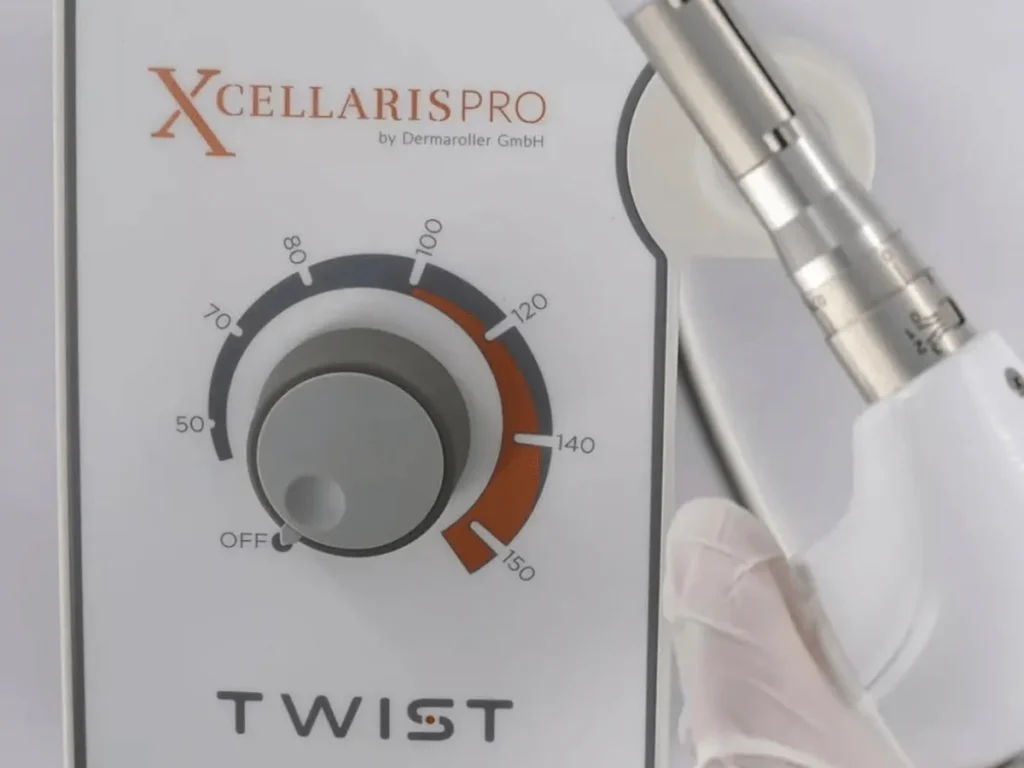
Myth 4: At-Home Devices Are Just as Good
At-home microneedling may seem like a convenient and budget-friendly alternative, but it’s simply not as effective as professional microneedling.
Many people assume that at-home microneedling devices can deliver the same results, but the reality is that professional microneedling devices are designed to penetrate the skin at precise depths, ensuring optimal results while minimising risks [3][9].
On the other hand, at-home microneedling devices lack precision and depth control, which can lead to ineffective treatments or even potential skin damage [4][9].
Another key difference is safety.
Professional microneedling is performed in a sterile, controlled environment by trained medical aesthetic practitioners who understand skin structure and customise treatments to specific concerns, significantly reducing the risk of complications.
According to BCAM, this expertise, combined with strict sanitation standards, makes professional microneedling both safer and more effective than at-home alternatives [4][5].
While at-home microneedling devices may seem appealing, they can’t match the precision, safety, and effectiveness of professional microneedling treatments.
If you want real results without unnecessary risks, professional microneedling is the better choice.
Myth 5: Results Are Instant
A lot of people think microneedling gives instant results, but that’s not how it works! In reality, it works by triggering the skin’s natural healing response, which takes time to show visible changes [8].
The process involves creating controlled micro-injuries in the skin, prompting the body to produce collagen and elastin, leading to long-term improvements in skin texture, tone, and firmness [2][3].
While some people notice an improvement in skin texture after one session, real, long-lasting results require multiple treatments [2][3].
The number of treatments required depends on the skin concern, such as acne scars, fine lines, or hyperpigmentation. The key is consistency! Each treatment builds on the last, allowing the skin to gradually repair and improve over time [2][8].
The best results come from a well-planned treatment schedule that allows the skin to properly heal and regenerate [2][8].
Microneedling is a scientifically backed, safe, and effective method for skin rejuvenation but there’s a lot of misinformation out there. Debunking skincare myths will now allow you to make the best choice for your skin.
Don’t let microneedling myths keep you from experiencing the benefits of collagen induction therapy!
With the right approach, professional microneedling can give you smoother, firmer, and more radiant skin. So, if you’ve been on the fence, consider this your sign to give it a try and unlock that healthy, glowing complexion!

Bibliography
- Alaesthetics. (2023). Why Aftercare Is Crucial for Aesthetic Procedures. [online] doi:
https://doi.org/10f95983/64a2791c7be4d3515b06a55a_fav - Alster, T.S. and Graham, P.M. (2018). Microneedling: A Review and Practical Guide. American Society for Dermatologic Surgery, 44(3), pp.397–404. doi:
https://doi.org/10.1097/dss.0000000000001248 - Atiyeh, B.S., Abou Ghanem, O. and Chahine, F. (2020). Microneedling: Percutaneous Collagen Induction (PCI) Therapy for Management of Scars and Photoaged Skin—Scientific Evidence and Review of the Literature. Aesthetic Plastic Surgery, 45(1). doi:
https://doi.org/10.1007/s00266-020-01927-4 - Aust, M.C., Reimers, K., Kaplan, H.M., Stahl, F., Repenning, C., Scheper, T., Jahn, S., Schwaiger, N., Ipaktchi, R., Redeker, J., Altintas, M.A. and Vogt, P.M. (2011). Percutaneous Collagen Induction–regeneration in Place of cicatrisation? Journal of Plastic, Reconstructive & Aesthetic Surgery, 64(1), pp.97–107. doi:
https://doi.org/10.1016/j.bjps.2010.03.038 - Aust, M.C., Reimers, K., Repenning, C., Stahl, F., Jahn, S., Guggenheim, M., Schwaiger, N., Gohritz, A. and Vogt, P.M. (2008). Percutaneous Collagen Induction: Minimally Invasive Skin Rejuvenation without Risk of Hyperpigmentation—Fact or Fiction? Plastic and Reconstructive Surgery, 122(5), pp.1553–1563. doi:
https://doi.org/10.1097/prs.0b013e318188245e - Bailey, A.J.M., Li, H.O.-Y., Tan, M.G., Cheng, W. and Dover, J.S. (2022). Microneedling as an Adjuvant to Topical Therapies for melasma: a Systematic Review and meta-analysis. Journal of the American Academy of Dermatology, 86(4), pp.797–810. doi:
https://doi.org/10.1016/j.jaad.2021.03.116 - British College of Aesthetic Medicine. (n.d.). Microneedling. [online] Available at:
https://bcam.ac.uk/patients/treatments/microneedling.aspx - Contour Group. (2024). Microneedling at Home vs. Professional Microneedling: Pros, Cons, and Safety Tips. [online] Available at:
https://contourgroup.co.uk/micro-needling/microneedling-at-home-vs-professional-microneedling-pros-cons-and-safety-tips/ - Holland, K. (2019). 3 Common Misconceptions about Skin Needling –. [online] MedSkin Clinic. Available at:
https://www.medskinclinic.co.uk/news/misconceptions-about-skin-needling/ - Jaiswal, S. and Sugat Jawade (2024). Microneedling in Dermatology: a Comprehensive Review of Applications, Techniques, and Outcomes. Cureus, 16(9). doi:
https://doi.org/10.7759/cureus.70033 - Trinny London. (n.d.). Microneedling: Separating the Myths and the Facts – Blog. [online] Available at:
https://trinnylondon.com/uk/blog/microneedling-facts?showCountryDialog=PK


